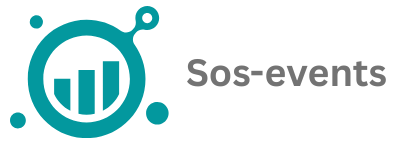In today’s digital age, remote work has become more than just a trend; it’s a new norm that’s reshaping how people approach their jobs. With the rise of technology and the increasing demand for flexibility, many professionals are navigating the challenges and opportunities that come with working from home. Adopting effective practices can make all the difference in maintaining productivity and work-life balance.
From setting up a dedicated workspace to establishing clear communication channels, the best practices for remote work can help individuals thrive in their roles. By embracing these strategies, remote workers can enhance their efficiency and collaboration while enjoying the benefits of a flexible work environment.
Table of Contents
ToggleImportance of Best Practices for Remote Work
Best practices for remote work enhance productivity, communication, and overall job satisfaction. They create a structured work environment, even outside traditional office settings. By fostering accountability, these practices encourage remote workers to meet deadlines and maintain high standards.
Effective time management becomes vital in remote settings. Workers benefit from scheduling tasks and adhering to set routines. This practice minimizes distractions and helps maintain focus on critical objectives.
Clear communication channels enable teams to collaborate efficiently. Regular check-ins, utilizing tools like video conferencing and instant messaging, facilitate real-time feedback. This communication fosters a sense of belonging and team cohesion, essential for remote environments.
Maintaining work-life balance is crucial in remote work scenarios. Establishing boundaries between work hours and personal time prevents burnout. Encouraging regular breaks helps sustain energy levels throughout the day.
Adapting to best practices promotes resilience in remote work scenarios. Professionals who embrace structured approaches can navigate challenges effectively, leading to long-term success in a remote work context.
Setting Up Your Home Office

Creating a functional home office is essential for remote work success. A well-designed workspace enhances focus, productivity, and comfort.
Ergonomic Considerations
Ergonomic considerations play a crucial role in ensuring comfort during long work hours.
- Desk Height: Use a desk that allows elbows to remain at a 90-degree angle.
- Chair Support: Select an adjustable chair that supports the lower back and maintains proper posture.
- Monitor Position: Place the monitor an arm’s length away at eye level to prevent neck strain.
- Keyboard and Mouse Placement: Position peripherals so wrists remain straight and relaxed.
- Lighting: Ensure adequate, glare-free lighting to reduce eye strain.
Necessary Technology
Necessary technology contributes significantly to seamless remote work operations.
- High-Speed Internet: Invest in a reliable internet connection with at least 25 Mbps for smooth video conferencing.
- Computer Specifications: Use a computer with sufficient RAM (at least 8 GB) and a fast processor for multitasking capabilities.
- Collaboration Tools: Utilize platforms like Slack or Microsoft Teams for real-time communication and project management.
- Video Conferencing Software: Implement tools like Zoom or Google Meet for effective virtual meetings.
- Backup Solutions: Set up cloud storage or external hard drives to ensure important files are safeguarded and accessible.
Time Management Techniques
Effective time management techniques enhance productivity and efficiency in remote work settings. By incorporating structured schedules and leveraging productivity tools, remote workers can navigate their tasks more effectively.
Creating a Daily Schedule
Creating a daily schedule helps remote workers allocate time efficiently across tasks. Workers should set specific start and finish times for each task, prioritizing high-impact activities first. Segmenting the workday into blocks, such as the Pomodoro technique, enhances focus and minimizes distractions.
- Define priorities: List tasks by importance and deadlines.
- Set time blocks: Assign specific duration for each task or activity.
- Incorporate breaks: Schedule short breaks to maintain energy levels.
- Review goals daily: Adjust tasks based on completed activities and shifting priorities.
Establishing a routine creates predictability, aiding in concentration and job satisfaction.
Utilizing Productivity Tools
Utilizing productivity tools maximizes efficiency and streamlines workflow. Various options exist to assist with task management, communication, and organization.
- Task management apps: Tools like Trello or Asana help track progress on tasks and projects.
- Time tracking software: Applications, such as Toggl, provide insights into time allocation and reveal areas for improvement.
- Collaboration platforms: Slack or Microsoft Teams facilitate real-time communication with team members.
- Note-taking applications: Evernote or Notion assist in keeping track of ideas and essential information.
Choosing the right combination of these tools fosters better organization, strong collaboration, and heightened productivity throughout the remote work experience.
Communication Strategies
Effective communication strategies help remote workers maintain productivity and collaboration. Implementing these practices strengthens team relationships and enhances overall performance.
Leveraging Video Conferencing
Video conferencing tools enable face-to-face interaction, which fosters engagement and collaboration. Popular platforms include Zoom, Microsoft Teams, and Google Meet. Regular video meetings enhance transparency, clarify expectations, and promote team bonding. Scheduling recurring meetings helps maintain connection among team members, while using features like screen sharing and virtual backgrounds enhances communication. It’s vital to establish guidelines for meeting etiquette, such as staying on mute when not speaking and being punctual to respect everyone’s time.
Establishing Clear Communication Channels
Establishing clear communication channels ensures that team members can exchange information seamlessly. Tools like Slack, Microsoft Teams, and Asana streamline communication and facilitate project management. It’s important to define the preferred methods of communication for different scenarios—such as using instant messaging for quick questions and email for longer discussions. Documenting processes and decisions in shared spaces, like Google Drive or Confluence, helps maintain transparency and provides a reference for the team. Regular check-ins, either weekly or bi-weekly, keep everyone aligned and accountable, fostering a cohesive remote work environment.
Maintaining Work-Life Balance
Maintaining work-life balance is crucial for remote workers to enhance productivity and prevent burnout. Implementing specific strategies fosters a healthier work environment.
Setting Boundaries
Setting boundaries helps remote workers delineate work hours from personal time. Establishing a consistent schedule, such as starting and ending work at the same times daily, reinforces this separation.
- Setting designated workspaces enhances focus and limits distractions.
- Communicating availability to family and friends prevents interruptions during work hours.
- Utilizing technology features, like “Do Not Disturb” settings, reduces notifications outside work hours.
Incorporating Breaks
Incorporating breaks revitalizes energy and concentration throughout the workday. Short, regular breaks significantly improve overall productivity.
- Taking a five to ten-minute break every hour helps recharge focus.
- Scheduling longer breaks for meals and stretching minimizes physical strain.
- Engaging in quick physical activities, like a brisk walk or simple exercises, enhances mental clarity and boosts mood.
Embracing remote work requires a proactive approach to ensure success and satisfaction. By implementing best practices that enhance productivity communication and work-life balance remote workers can thrive in this evolving landscape. A well-designed workspace effective time management and clear communication channels play pivotal roles in fostering a positive remote work experience.
As professionals adapt to these strategies they not only improve their own efficiency but also contribute to a cohesive team environment. Prioritizing mental and physical well-being through regular breaks and established boundaries is essential for long-term sustainability.
Ultimately the journey toward optimal remote work is ongoing and requires continuous adjustment and commitment to best practices.




